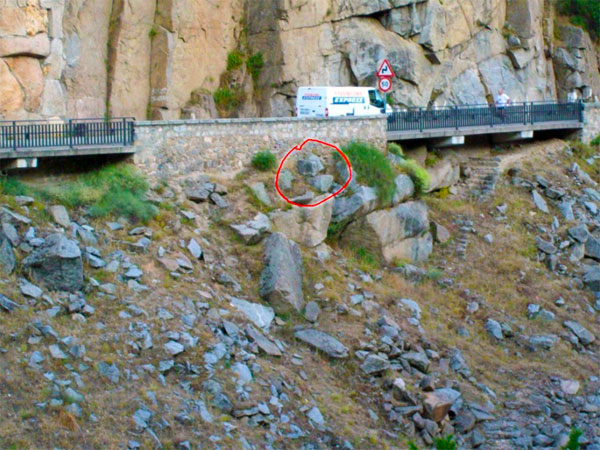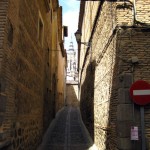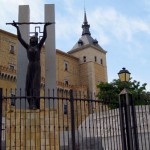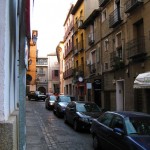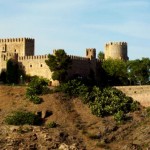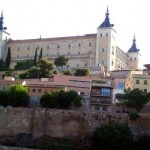Day 2: Madrid
05/19/2009
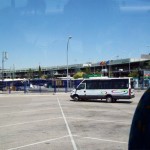
After 12 hours on three planes, the group is restless and eager to be in Spain. I dislike flying, so I’m pleased to be on the ground. When we arrive at the Barajas Airport in Madrid, we wait almost two hours for another group to arrive, Oklahoma State University. University of South Dakota will join us later at the hotel.
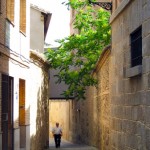
Sitting in the airport, with the murmur of voices all around in the Cafeteria (cafeterias are one of the social meeting places of Spain), I realized that I was going to have use Spanish for everything. The thought is daunting because I really haven’t used Spanish in almost 20 years. I exchange my money at the bureau de change and grab an interesting pastry filled with chocolate from the Cafeteria; I never eat pastries with filling. Our luggage is piled in the middle of a group of tables and we finish sharing our individual reading assignments. My book was a collection of contemporary short stories and excerpts organized by regions-- Spain: A Traveler’s Literary Companion. Finally, our guide, Sam, directs us to the bus before he gathers the new arrivals.
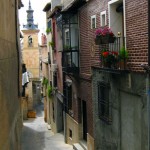
We travel out of Madrid for about an hour and a half to Toledo. Jaime, our driver, is from Galicia in the northwest of Spain. Galicia is considered to be the first kingdom of Europe until the Visigoths invaded Spain. The area was inhabited originally by Celts (Galicia/galego are related to our words for Gallic and Gaul) and the mountains isolated the area from the rest of Spain to a large degree. Galician is a Romance language closely related to Portuguese. Jaime is very funny, but it was difficult for me to follow his conversation.
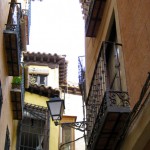
We were warned that we would have to lug our suitcases “a few hundred yards from the bus to the hotel”, but I suspect that it was a greater distance to the Carlos V Hotel. Forty-two students trailed after Sam through the narrow streets of Toledo. The other two universities had not packed as lightly as most of the IU East group had packed.

Dinner was not scheduled until later and I was tired. Very tired. I had not slept on the planes and I needed a nap. We were advised not to nap because it would interfere with our jetlag. I took my suitcase to my room, and then we trekked to the Alcántara Bridge. On one side of the Tagus River was the Castle San Servando (a fortress of Mudejar military design originally built as a monastery), and on the other, the Alcázar of Toledo. Alcázar is from the Arabic word al qasr meaning palace or fortress; there are many Alcázars in the different cities and regions of Spain.
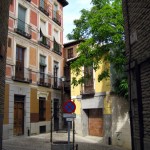
I followed the path around to the automobile bridge and found a rock that looked like the head of Don Quixote (trust me, on my camera it’s Don Quixote). As my namesake, Dorotea, from Cervantes’ novel would say, this is “mi verdadera historia” (my true story).
